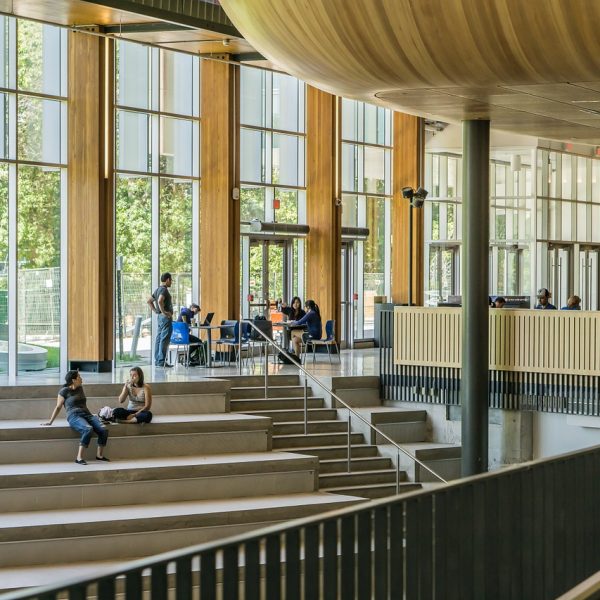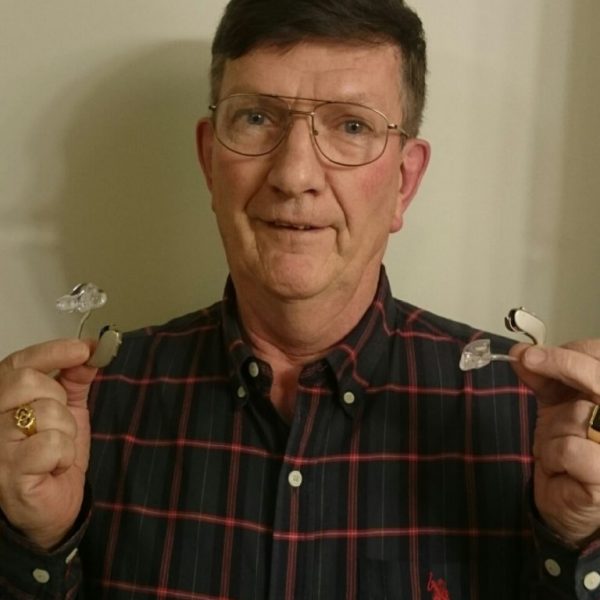WorkBC Assistive Technology Services Helps David Perform At Work

David is a lead hand supervisor at a post-secondary institution in Kelowna. He is in charge of a wide variety of tasks on campus from event set-up to installing whiteboards to snow removal.
David has suffered from hearing loss since he was born. This can make many parts of his job, which requires a lot of communication with college staff, a lot tougher.
Dana Is Able to Continue Her Career Thanks to Her New Hearing Aids

Dana works as a real-time transcriber for post-secondary students, largely at the University of Victoria, captioning lectures for students who are hard of hearing or deaf.
However, Dana was finding she was struggling with her own hearing.
“I often work in a team with another transcriber, so I would notice they were getting things — mostly student comments that were across the room — that I wasn’t fully hearing. As you can imagine, where my job is to actually hear for someone, this became quite alarming,” she explains.
“I’m Not Worrying Anymore About My Ability to Perform My Job,” Lisa Grateful for New Hearing Aids

Lisa works as a seniors program coordinator at a recreation centre in Coquitlam.
“My daily work environment varies from morning to afternoon, and from day to day. Sometimes I’m one-on-one with the seniors, other times I’m running a large group event. Some days I conduct small workshops. Some days there are staff meetings or board meetings,” she explains.
“The Hearing Aids I Have are Unbelievable and I Will Be Forever Thankful”

Russell has worked as an inside sales representative for a building materials company in Chilliwack for nearly a decade.
Having “grown into” the role after having had to transition to less physical work following a hernia operation, Russell found his groove, doing everything from over the counter and phone sales to providing quotes for construction companies.
However, he was facing a significant barrier in this line of work.
Assistive Technology Services “Has Literally Changed My Life”

Jamie is a sales professional based in Kelowna.
It’s a job that requires him to be focused in conversations with clients and staff, something that was becoming hard to do with his hearing loss.
“The decline in my hearing made it very difficult to follow conversations — there were many times I misinterpreted a conversation only to add input that was incorrect as a result,” he admits.
Assistive Technology Services Helps Hao Find a Career

“Assistive Technology Services helped me to get a full time job,” Hao beams.
Today, Hao works as a banker in New Westminster, helping customers meet their financial needs and advising financial solutions.
Natasha is “Way Less Exhausted and Stressed Out” Thanks to Her New Hearing Aids

As a bank teller in Kelowna, Natasha helps hundreds of clients a week with their banking transactions. She also has hearing loss in both ears.
“This affects my ability to understand what clients and co-workers need. It is a very loud and distracting environment with a lot of background noise,” Natasha shares. “People speaking in different tones, or with accents, or over the phone can be challenging to comprehend.”
“My New Hearing Devices Allow Me to Look Forward to Going to Work”

Thomas has dealt with hearing loss for over 20 years. As a geoscientist for much of that time, his hearing loss didn’t significantly affect his work.
“I often worked in remote locations and interacted with just a handful of people,” he says.
After losing that position due to a layoff, however, he found new jobs in first aid and security, and found it much harder to get by.
“It Completely Changed My Life”

Zhi, of Vancouver, has worked at a bakery for nearly 20 years. He does a little bit of everything, from packaging to preparing the dough to applying icing to cakes, even stepping in to do delivery across the Lower Mainland when required.
He’s a dependable hard worker who likes his workplace, having “made a lot of friends along the way.” He’s also been diagnosed with hearing loss in both ears.
Theresa Makes Her Work Day Less Challenging with New Hearing Aids

Theresa is a kitchen designer and office manager for a small cabinet shop in Langley.
“I work very closely with our customers from the first time they enter our showroom through to installation and deficiency completion,” she explains.



